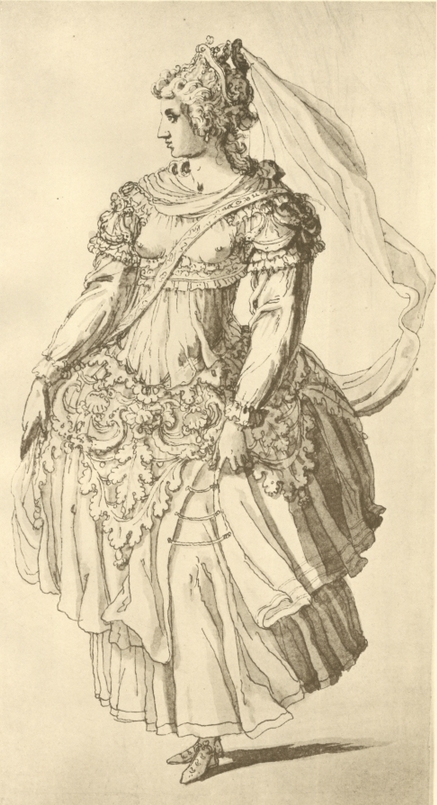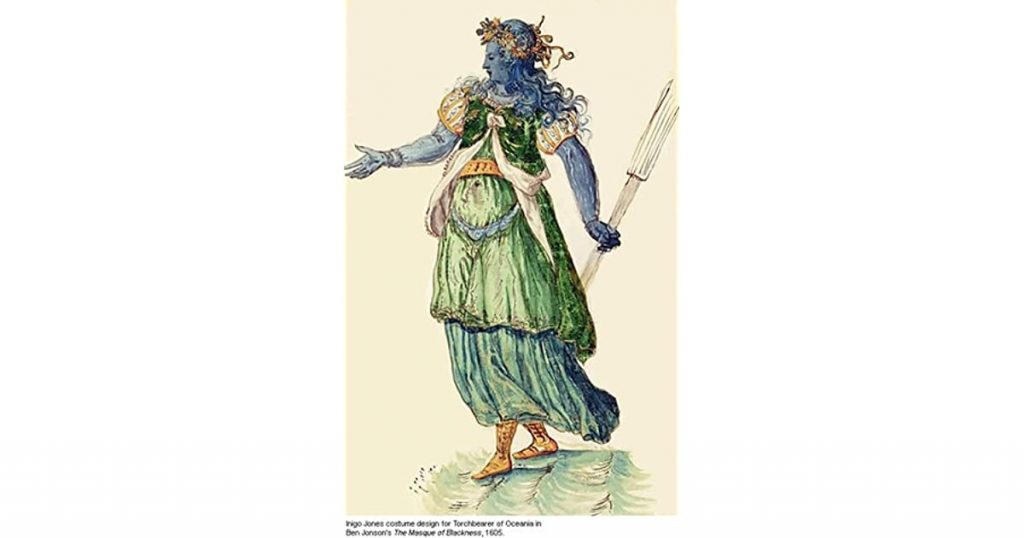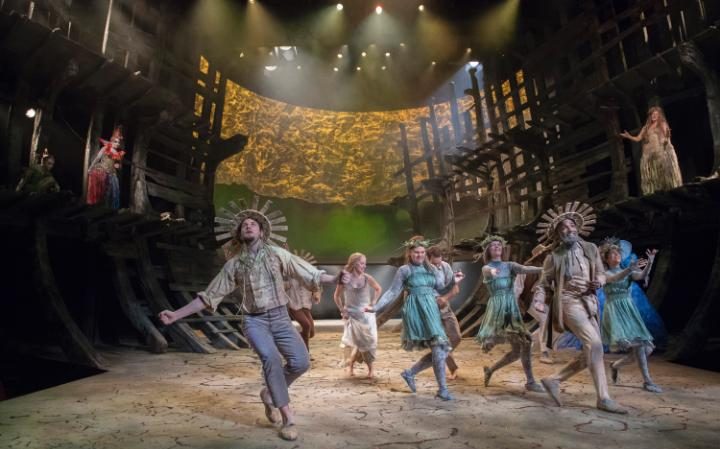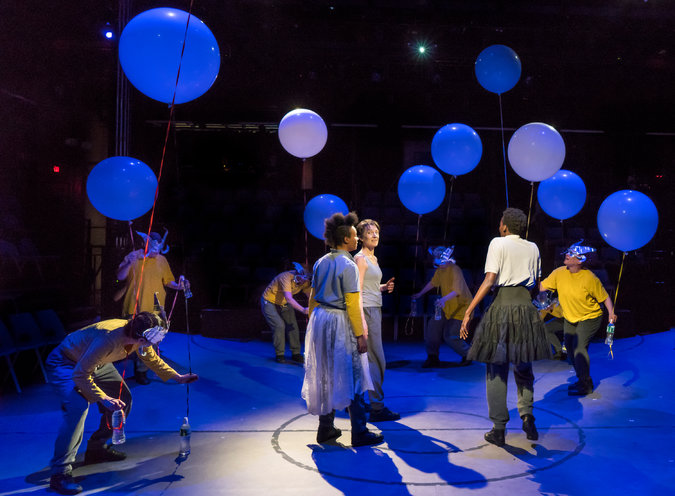IRIS You nymphs, called naiads, of the windring brooks,
With your sedged crowns and ever-harmless looks,
Leave your crisp channels, and on this green land
Answer your summons; Juno does command.
Come, temperate nymphs, and help to celebrate
A contract of true love. Be not too late.
Enter certain Nymphs.
You sunburned sicklemen, of August weary,
Come hither from the furrow and be merry;
Make holiday! Your rye-straw hats put on,
And these fresh nymphs encounter every one
In country footing.
Enter certain Reapers, properly habited. They join with the Nymphs in a graceful dance, towards the end whereof Prospero starts suddenly and speaks: after which, to a strange hollow and confused noise, they heavily vanish. (4.1.128-138SD)
Again, the text here – even with its remarkably full stage directions (almost certainly not Shakespeare’s, or not wholly, but augmented by the King’s Men’s scrivener or scribe, Ralph Crane) – can only ever be a flattened out, partial representation of what may well, originally, have taken up as much time, if not more, than the rest of the masque which has preceded it. Court masques and other elite entertainments mostly consisted of dancing, and they could last for hours. This one doesn’t; it can’t, but we have to imagine that this short passage of dancing nymphs and reapers is extended, and elaborate, and one of the high points of the entertainment. It is carefully ordered: the nymphs and the reapers are summoned by Iris, a herald as much as a messenger. These nymphs are naiads, water nymphs, perhaps wearing costumes from the same source, or in the same style, as Ariel’s, when they were like a nymph of the sea. (See pictures below.) But they’re not sea nymphs, but rather those that dwell in the streams and little rivers of the countryside, earlier evoked so vividly by the goddesses. They do not rush, but are temperate; the brooks in which they dwell are windring, which seems to be a portmanteau coinage of winding and wandering. The channels, the streams are crisp not because they are crispy and crunchy in any way, but because they are rippling, and also, perhaps, curling, winding again (crisping is an adjective sometimes applied to curly or wavy hair). This is a benign, pastoral landscape. The nymphs wear sedged crowns, garlands woven from rushes or grasses that grow beside the water. But they are commanded to leave their streams and come to this green land, to dance, and celebrate a contract of true love. Be not too late, a throwaway injunction which is easily missed, but which resonates with the play’s larger concern with timekeeping and timeliness, and with what will happen a little later in the scene. There is presumably music; the certain Nymphs may enter dancing. But they need partners, and so Iris summons the sunburned sicklemen – not shepherds, who might be thought the default choice – but reapers, harvesters, straight from the fields, with their straw sun-hats, and ready to dance with the nymphs. Encounter every one, directs Iris; line up in pairs, for a lively country dance, rather than a stately courtly one. (Foot it, girls! is the rather undignified instruction that Capulet gives to the dancers at the ball in Romeo and Juliet.) Appropriately for a wedding masque, the spring landscape has given way to high summer, August, and to harvest time – this is all about fertility, ripeness, readiness.
How many Nymphs and Reapers? Two of each? Three or four of each? Eight in total would make for a better dance, I think, more potential for patterning (and in some number symbolism, it’s the number of new beginnings, and hence appropriate for a wedding). It means that there are almost certainly supernumeraries involved: some of them at least have already appeared as spirits, and probably as mariners – but there may well be extra boys here, appearing just as nymphs; this would make sense if elaborate costumes and head-tires are being worn. The Reapers are properly habited, which probably means smocks to go with their sun-hats; much less complicated to wear and quicker to take on and off.
Dancing dancing dancing. And then Prospero starts suddenly and speaks. (What he specifically says follows; the SD describes what happens after, and probably while, he speaks.) He sits upright? Shakes himself? Startles, anyway. There is a strange hollow and confused noise: whatever sound-effects are added (thunder?) the music must collapse into discord and disorder. And the Nymphs and Reapers heavily vanish – slowly, reluctantly, sadly? I tend to think that they drag their feet, in contrast to the fleet-footedness and exhilaration of their dance; above all, the rhythm has to change, and the musicality disappears. Something has gone terribly wrong…





